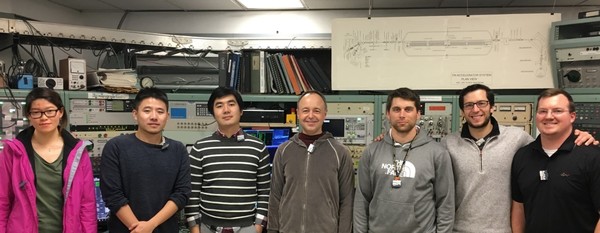
The University of Michigan's Applied Nuclear Science Group, led by Professor Igor Jovanovic, visited the University of Notre Dame last week to perform a series of experiments using the FN Tandem accelerator. The experiments centered around the acceleration of deuterons into a boron-11 target, which produces unique high-energy neutrons and gamma-rays. This reaction was in turn used as a mixed-particle interrogation source in conjunction with a variety of detection systems, including organic, inorganic, and semi-conductor detectors. Neutron and photon spectroscopic transmission measurements were used identify various metals based on their effective atomic number. A contraband detection method was tested that utilized gamma-ray signatures from inelastic neutron interactions to characterize material composition. Further experiments investigated delayed neutron production by oxygen-17, which is an important component of the background signature for some detection schemes searching for concealed special nuclear material. Each of these measurements explores fundamental physics concepts in an effort to continue advancing nuclear security and nonproliferation applications.
 Bismuth metal interacting with neutrons
Bismuth metal interacting with neutrons
 New shielded target position in East target room
New shielded target position in East target room
 Students changing targets in the new shielded target position in East target room
Students changing targets in the new shielded target position in East target room
 Scintillator array with borated polyethylene shielding
Scintillator array with borated polyethylene shielding
 Scintillator spectrum showing separation of neutrons and gammas from 4 MeV d + natB:
Scintillator spectrum showing separation of neutrons and gammas from 4 MeV d + natB:
 HPGe spectrum showing gammas from 4 MeV d+nat^B
HPGe spectrum showing gammas from 4 MeV d+nat^B